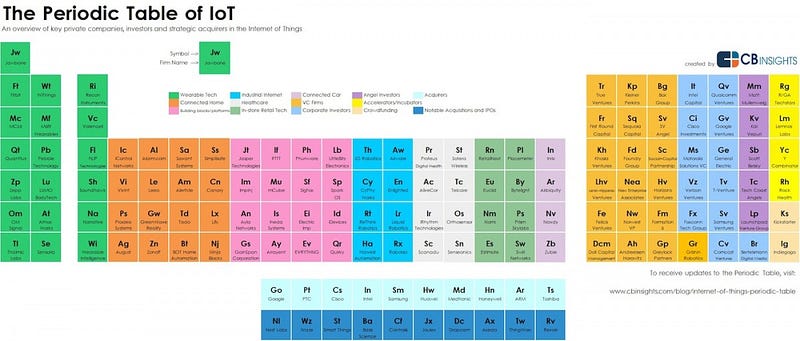
Most of us look forward to that moment when we can head home and turn on the sound system to take a much-deserved breather after a long day at the office. Like it or not, this is all slowly becoming obsolete, not only with respect to longer working hours, but in terms of how people today experience home life.
What has led to this change?
The presence of IoT gadgets, services and technologies have drastically impacted the way in which we lead our lives — from the office, to lunch breaks, and of course, to our home lives. Today, we don’t need to be physically present to carry out daily home tasks and chores. Whether you need to activate a home alarm system or provide your international guest with access to your private garage due to a long and seemingly endless boardroom meeting, you can be in full control of your devices from afar.
In other words, these and similar types of advancements have positioned efficiency as a top-level priority for all of us in possession of home devices.
So what lies ahead?
The household experience today has undergone fundamental developments over the past few years, from an initial intriguing concept to a niche topic in the tech world. In this post, we look at 5 trends that will change how we experience home-life:
1. Increase in tools and services that encourage and/or directly support DIY solutions.
Just a quick Google search will lead you to immediately concur — DIY solutions have exploded onto the tech scene. Today, people are eager to be in control of their outcomes. From DIY websites to tiny home installation hacks, Patrick Moorhead, of Moor Insight & Strategy, claims that he frequently encounters messages and displays regarding DIY home automation services and products.
2. Multi-device support will be prioritized
According to Deloitte, one of the principal challenges of IoT systems rests on the notion that they fail to deliver a complete turnaround system for users. More specifically, in order to truly succeed in this dynamic marketplace, IoT companies and service providers need to develop appropriate measures to gather data and monitor home devices remotely, regardless of the type of physical device.
Without complete, turnkey solutions, such companies will be faced with deep challenges related to user onboarding. Thankfully, companies such as Adelaide-based Xped are offering IoT solutions that ease new consumers into adopting automated home systems with simple integration options that will operate across multiple devices. For instance, Xped’a ARDC capability enables new users to quickly enter the IoT world at home by effortlessly tapping their smartphones to their desired physical home device. Such functions reduce adoption barriers and encourage faster IoT adoption rates. See the screenshot below for a simple demonstration.
Scott Amyx of Amyx+ says “the market is addressing the interoperability through industry standards and protocols for interoperability. Consortiums and alliances such as the AllSeen Alliance, Eclipse Foundation, OSHA, OIC, and others are addressing this very issue. That means across profiles or product categories, from refrigerators, ovens, vacuums, stereos, lights, door locks to cameras, they can find, communicate and share data seamlessly.”
Moreover, Amyx indicates that new home automation hubs, OS and app abstraction players are unifying the separate app or device experience with a single HCI user experience that can control all connected home things. Proprietary home automation platforms include Apple’s HomeKit, Google’s Nest, Brillo and Weave, and Samsung’s Smart Home. OORT Technology is looking to become the one unified app for all smart home things.
3. Many new emerging players operating in the IoT space
The numbers don’t lie. According to CB Insights, there are over 140 companies operating in the IoT space and this figure is likely to grow exponentially. While this list coverts IoT players across multiple industries and not only home systems, the growth is difficult to ignore. In monetary terms, this space is projected to “…grow to $300 billion dollars by 2020.”

Source: cbinsights.com
But how does this growth impact our home-life? Well, for starters, potential adopters will have increasingly more IoT providers to choose from. This will likely make this space more competitive and even potentially drive down prices. Hopefully, in this way, IoT won’t just be a luxurious item reserved for the few tech enthusiasts and upper echelons, but rather, something that all of us can enjoy.
Amyx cautions that this diversification and downward price pressure will not occur rapidly through proprietary home automation platforms but rather through open standards and protocols that will enable any manufacturers to comply with industry standards to make the consumer experience easy to use and adopt.
4. Fast-paced lifestyles demand immediate, digital control
As was stated earlier, our work week no longer follows the generic 9 to 5 schedule. In fact, during our busy daily schedule, we are often running from place to place, dropping off kids at swim practice or flying to a business conference. As such, our home-based chores must be expedited. This evolution in lifestyle thus requires complete, turnkey tech solutions that can easily get new users onboard and allow them to quickly and remotely connect to their home devices.
According to Accenture, business tech trends have extended to the home sphere. Their 2015 Technology Vision reported stated that companies have started to understand the potential of IoT solutions to benefit the home experience: “…companies are using these connections to offer new services, reshape experiences, and enter new markets by creating digital ecosystems. Home Depot, for example, is looking to shape the way people live through an emerging connected home market. The company is working with manufacturers to ensure all of the connected home products it sells are compatible with the Wink connected home system. In doing so, Home Depot is creating its own connected home ecosystem, with a wide range of services that are easy to install.”
5. Safety and security have been prioritized
“It’s 10 PM, do you know where your children are?” Unfortunately, this fear has evolved into even more frightening scenarios. There is no doubt that we are living in an age known for chaos, terror, and the occasional hypochondriac neighbor we all try to avoid. While the world is currently facing large security issues, experts such as SafeWise have also witnessed a trend towards home security automation and safety systems. Canary andPiper are two great examples of a handful of up-and-coming startups taking advantage of this trend.
“People Power found that it wasn’t the utility savings and efficiency that was the number one driver of connected home adoption but rather the ‘peace of mind’ factor,” says Amyx. “Hence they and others such as iControl Networkshave doubled down on home security, independent living for elderly and personal security of children and family members as their top priorities.”
Summing Up
Our home-life is now more dynamic than ever. Various trends have pointed out that we are always on the move and need to be constantly in control of our physical devices while not being present at the source. Thankfully, the emergence of multiple IoT-connected players and solutions have allowed us to become highly digitalized, in control of our own security, as well as increasingly interconnected at the same time.
Given how dynamic the world of IoT is, it will be exciting to see how these and additional trends will continue to change our home-life experiences.
Refer to the full article on Forbes. Published on December 18, 2015. Author Steve Olenski.

















